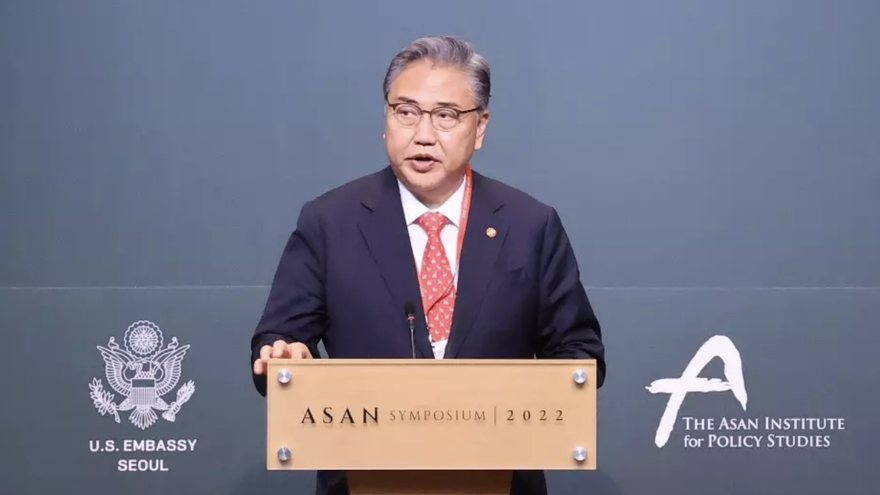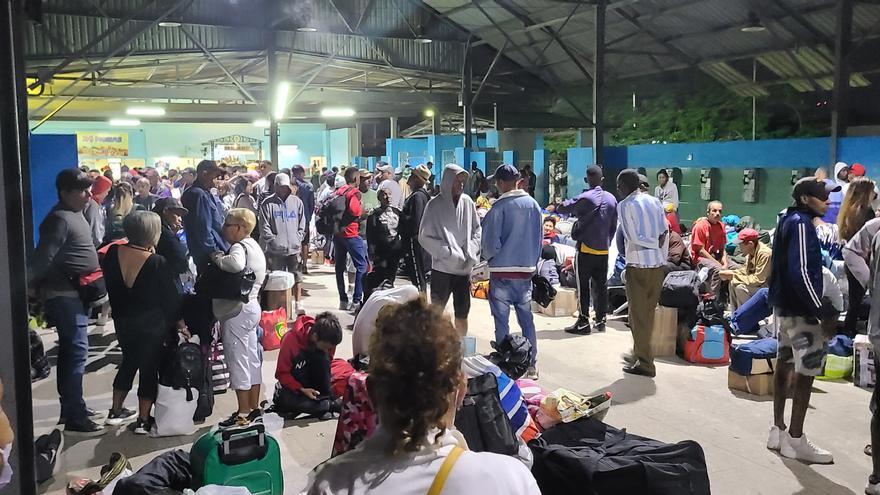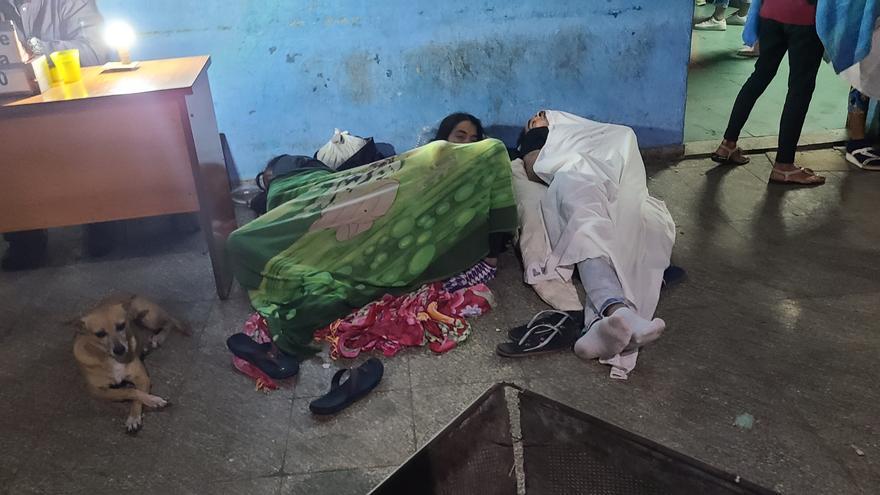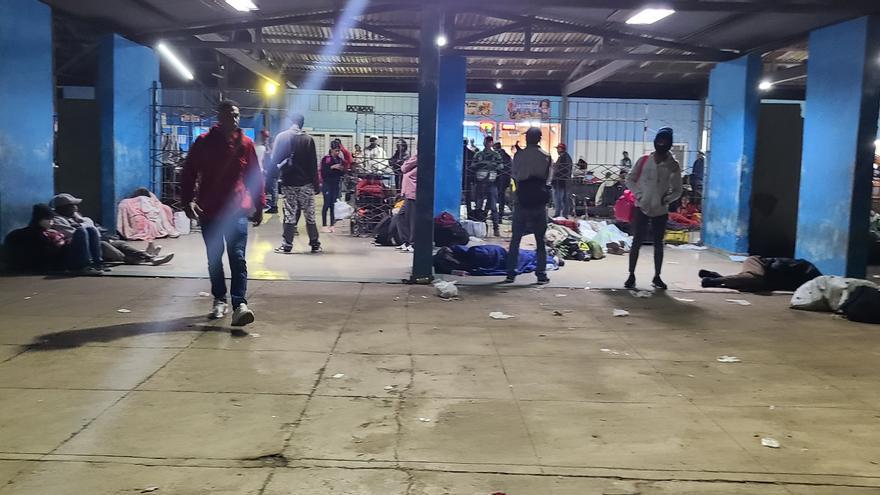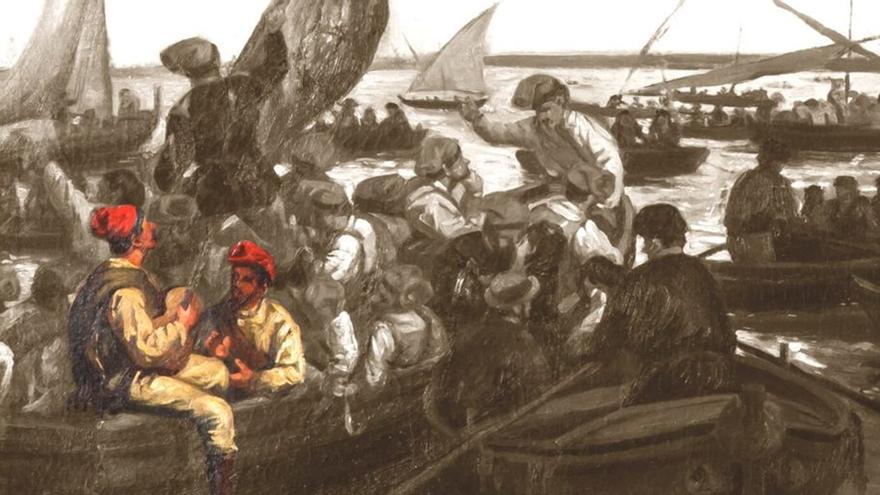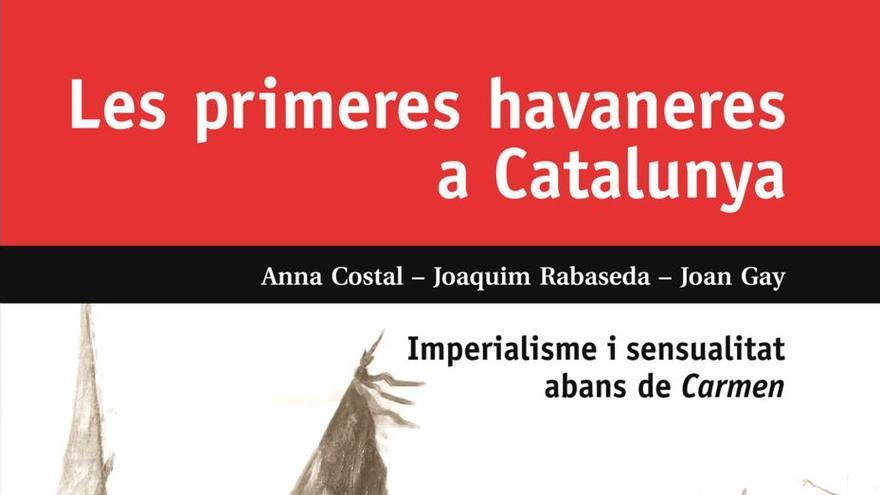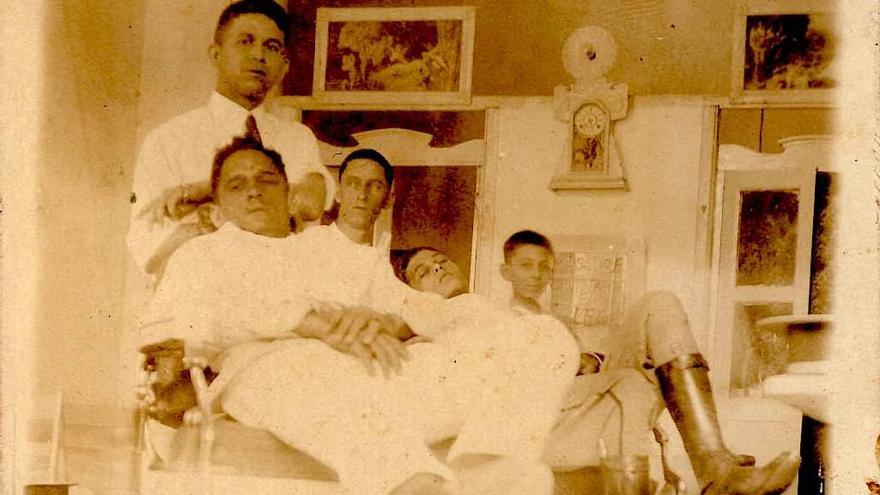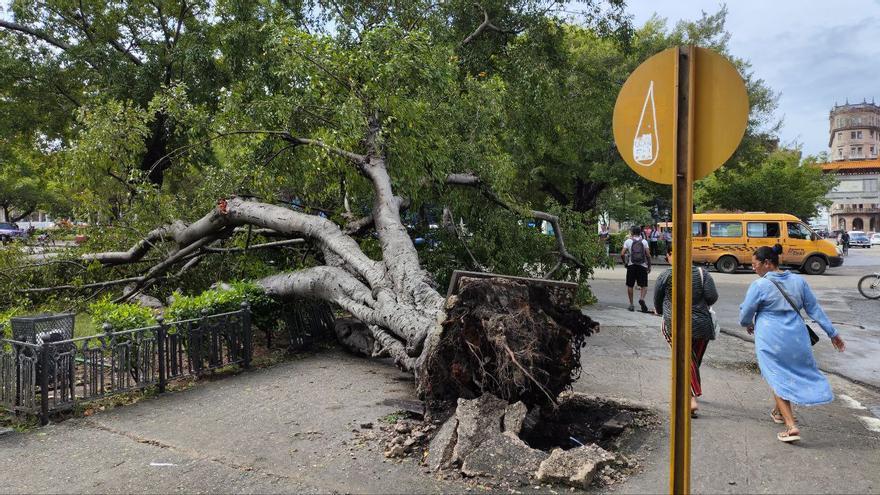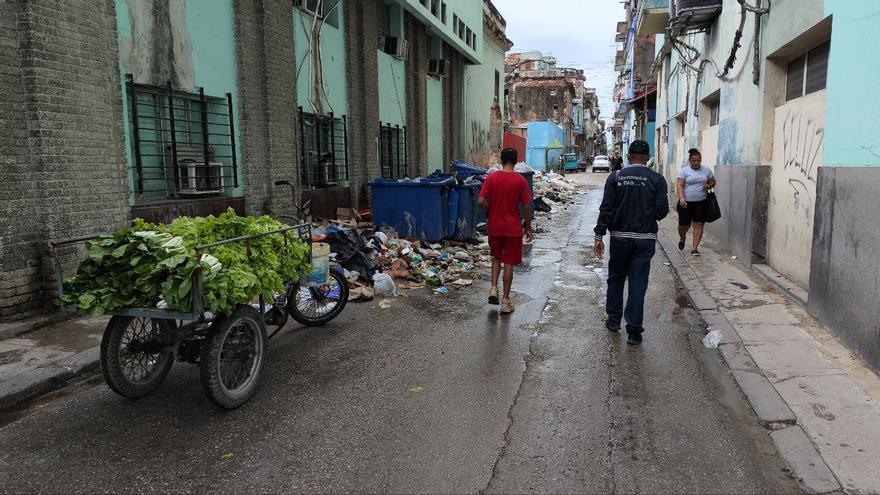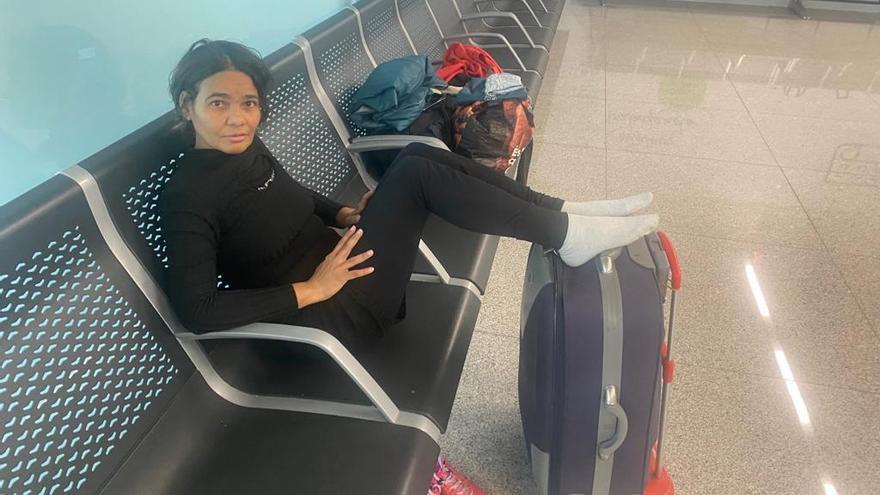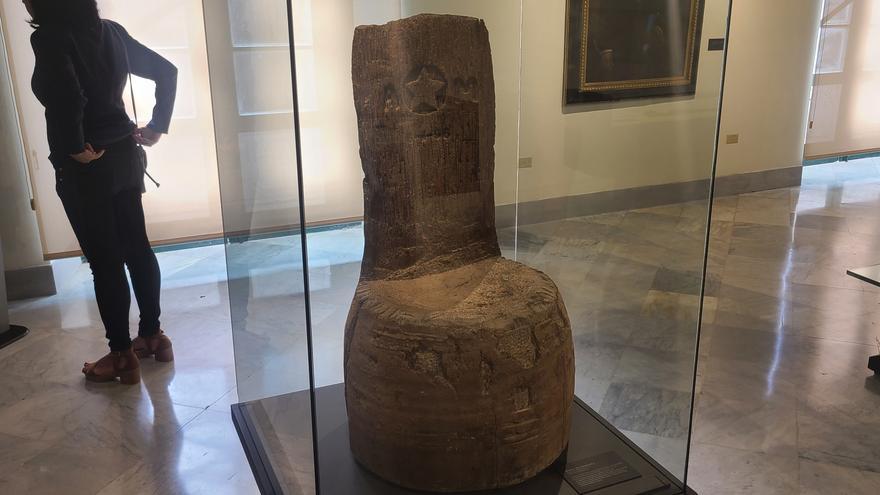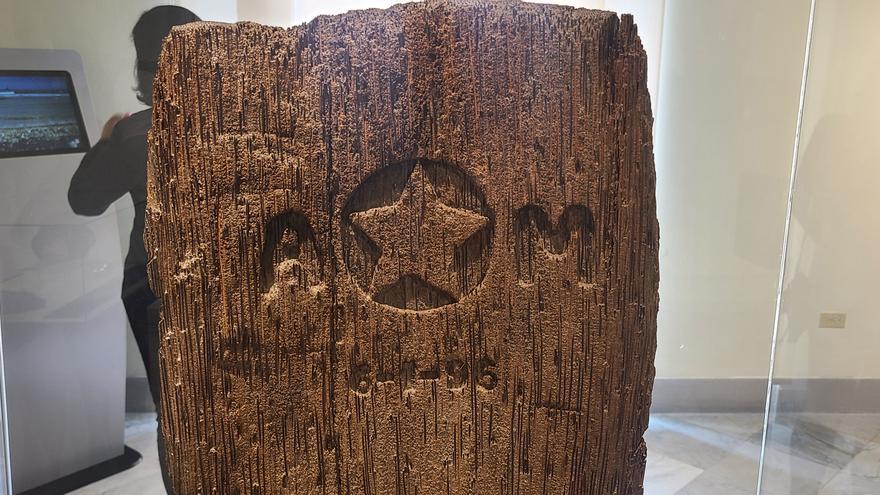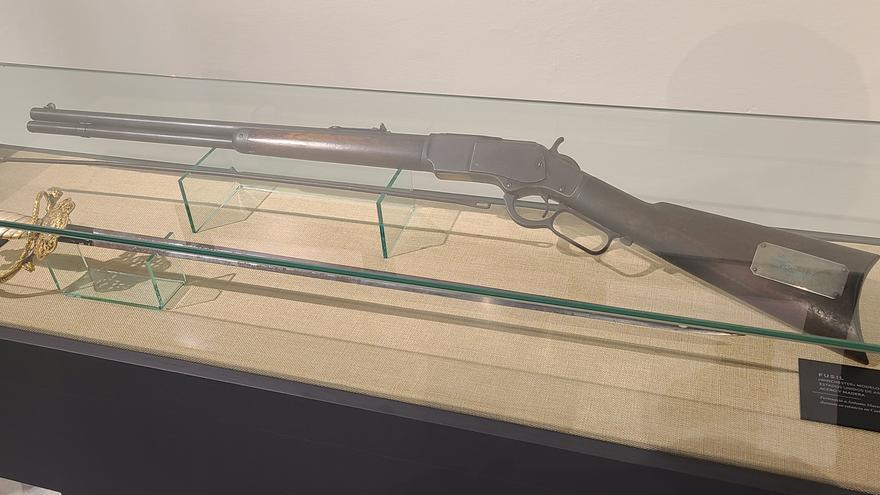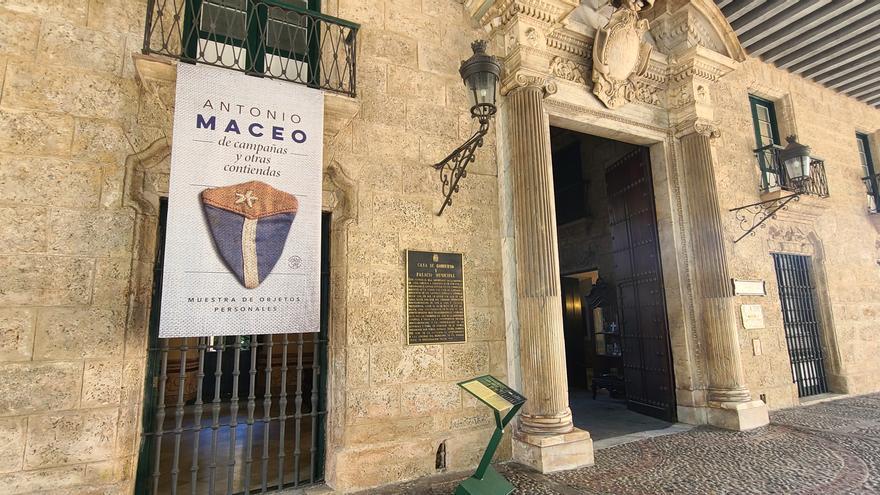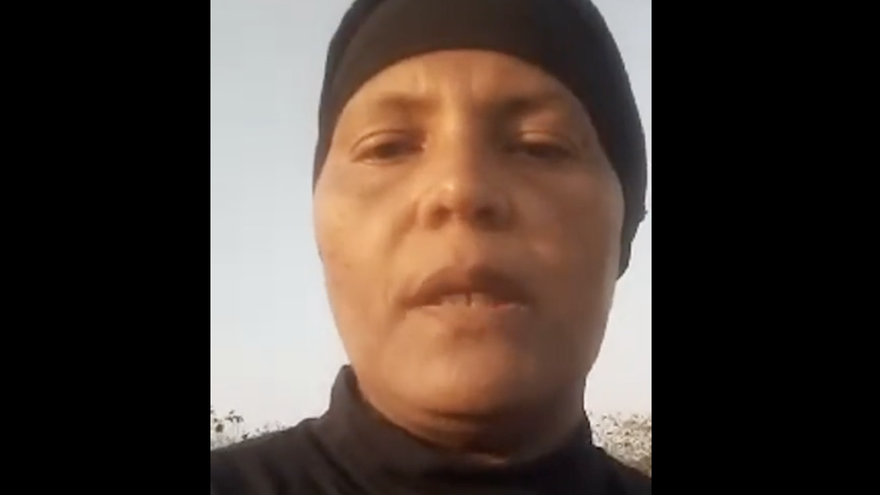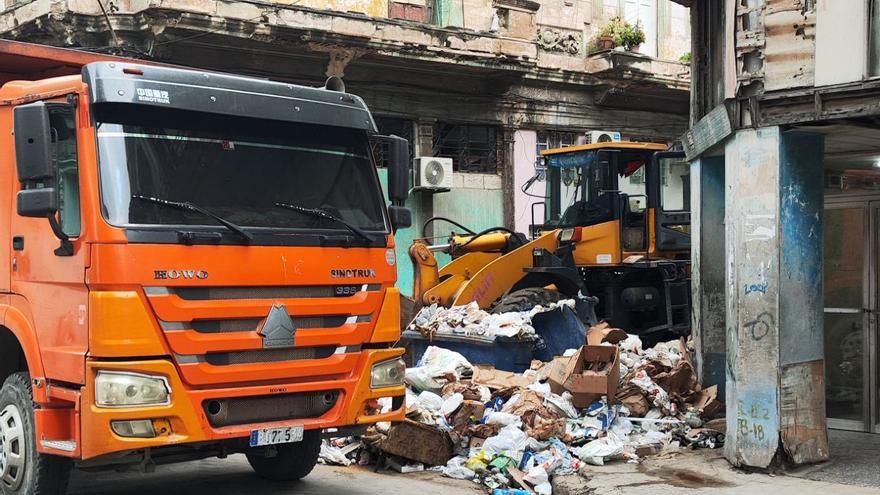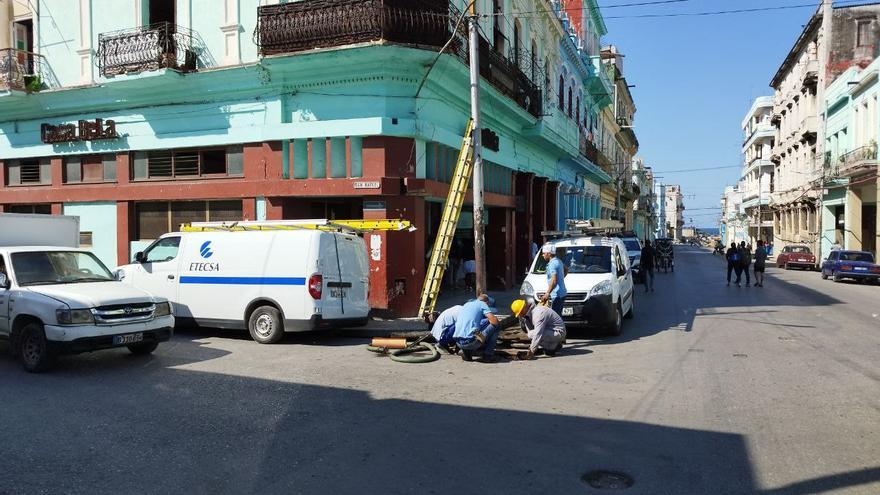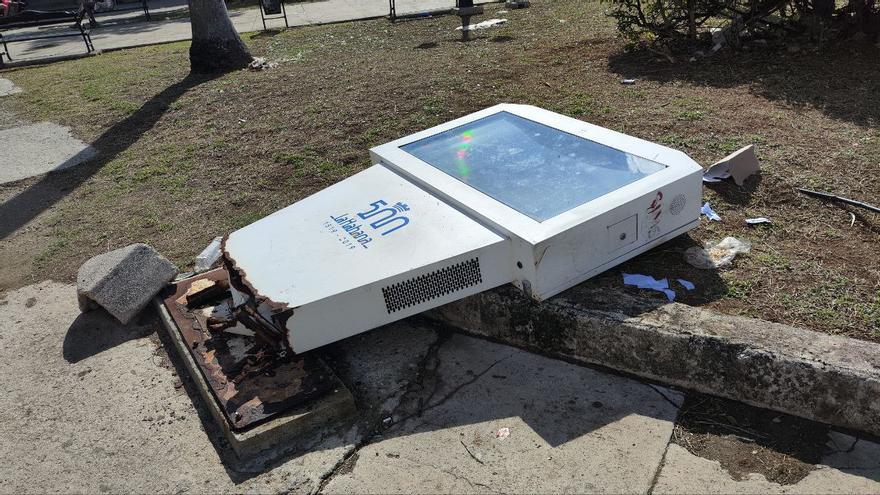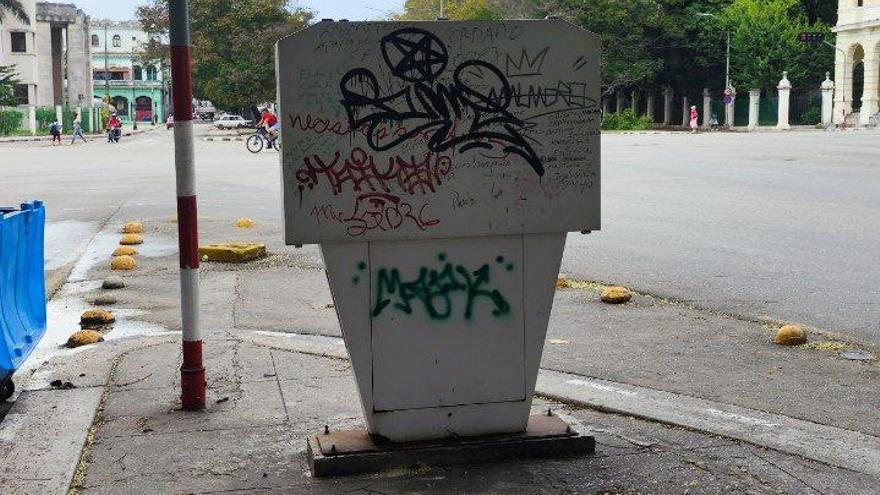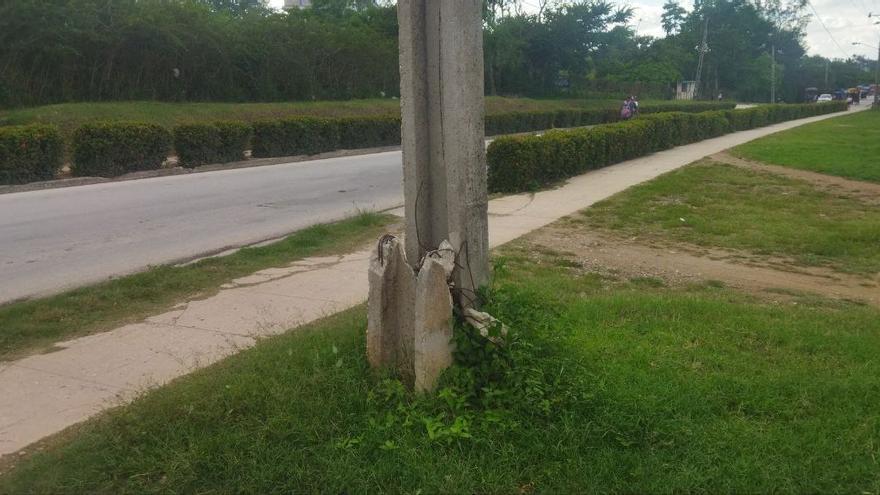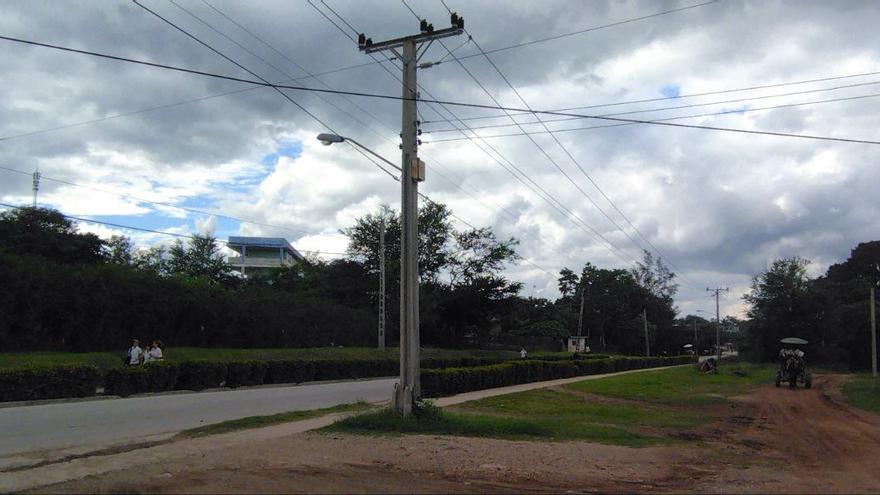
![]() 14ymedio, Havana, 14 February 2024 – Ten months after Yasmany González Valdés’s detention – for creating graffiti opposing the government and the Communist Party – this Tuesday saw the conclusion of the trial in which he was charged with the crime of enemy propaganda. The prosecution requested six years imprisonment, two less than the maximum provided for in this offence.
14ymedio, Havana, 14 February 2024 – Ten months after Yasmany González Valdés’s detention – for creating graffiti opposing the government and the Communist Party – this Tuesday saw the conclusion of the trial in which he was charged with the crime of enemy propaganda. The prosecution requested six years imprisonment, two less than the maximum provided for in this offence.
His wife Ilsa Ramos told Martí Noticias that his lawyer tried to get the sentence lowered – by three years – pleading his collaboration during the investigation. “He says that Yasmany shouldn’t have to have a sentence so near to the maximum for this offence, which is eight years, because he admitted to putting up the posters and cooperated in the handwriting checks. Now we have wait for the final sentencing, which could take more than another month”, she explained.
At the trial – which was held at the Tenth of October Municipal Tribunal in Havana – only close family members were permitted to attend: his parents and his wife
At the trial – which was held at the Tenth of October Municipal Tribunal in Havana – only close family members were permitted to attend: his parents and his wife. “It started very late because they didn’t bring in the prisoners (him, and another younger man, also from the Combinado del Este) – both of them charged with “enemy propaganda”, although not part of the same case. The trial scheduled for 9am finally started at 11am”, Ramos added. continue reading
His wife also added that the attorney intervened during the trial in order to add aggravating circumstances, among others propaganda sent via his mobile phone, and incitement to attend demonstrations. “The lawyer defended him, arguing that Yasmany was being judged only for the posters”, she said.
González Valdés, known on social media as Libre Libre, was called in at the beginning of April 2023 by the police, who linked him to the clandestine group known as El Nuevo Directorio (END) – The New Directory – which were named on social media as being responsible for the posters that the activist was accused of. He attended an interrogation, where they conducted graphological tests and they tried to retain him, unsuccessfully, for non payment of fines unrelated to the case.
On 20 and 23 March, two enormous graffitis had been created, saying “No to the PCC” – one of them at the Faculty of Physics and the other in Aguirre Park. But it was the two following ones – on 17 April, at the university stadium and at 7 Calle Humboldt – which provoked a “violent search” of his house by 15 police officers who confiscated a paintbrush, overalls and a phone.
After this operation he was driven to Villa Marista, the headquarters of State Security, and interrogated for a month, after which he was moved to the Combinado del Este
After this operation he was driven to Villa Marista, the headquarters of State Security, and interrogated for a month, after which he was moved to the Combinado del Este.
During his time in prison his family denounced the fact that the activist was subjected to harassment from other prisoners, exposed to infections and accused of trying to form an “opposition movement” inside the prison, for which he spent lengthy periods in a punishment cell.
According to his wife, during the trial the prosecutor reminded the court that the crime for which he was indicted – enemy propaganda – is categorised in “the penal code which has been in force since 2022 and which was approved by more than 79% of the population”. However, this law has not, in fact, been put to any referendum, and neither of the two previous actual referendums – for approving the 2019 Constitution and the 2022 Family Code law – received anywhere near this level of support.
Translated by Ricardo Recluso
____________
COLLABORATE WITH OUR WORK: The 14ymedio team is committed to practicing serious journalism that reflects Cuba’s reality in all its depth. Thank you for joining us on this long journey. We invite you to continue supporting us by becoming a member of 14ymedio now. Together we can continue transforming journalism in Cuba.

